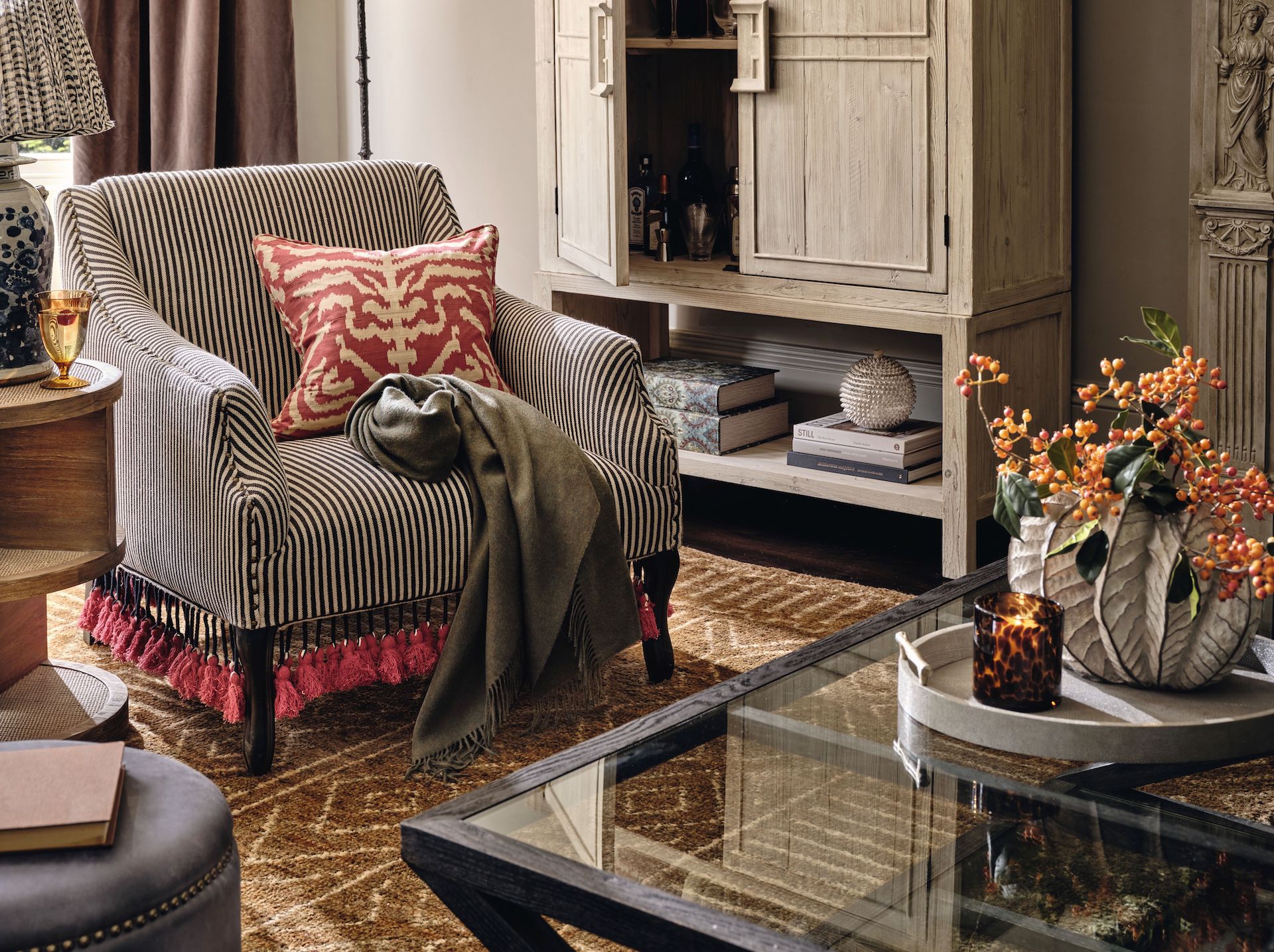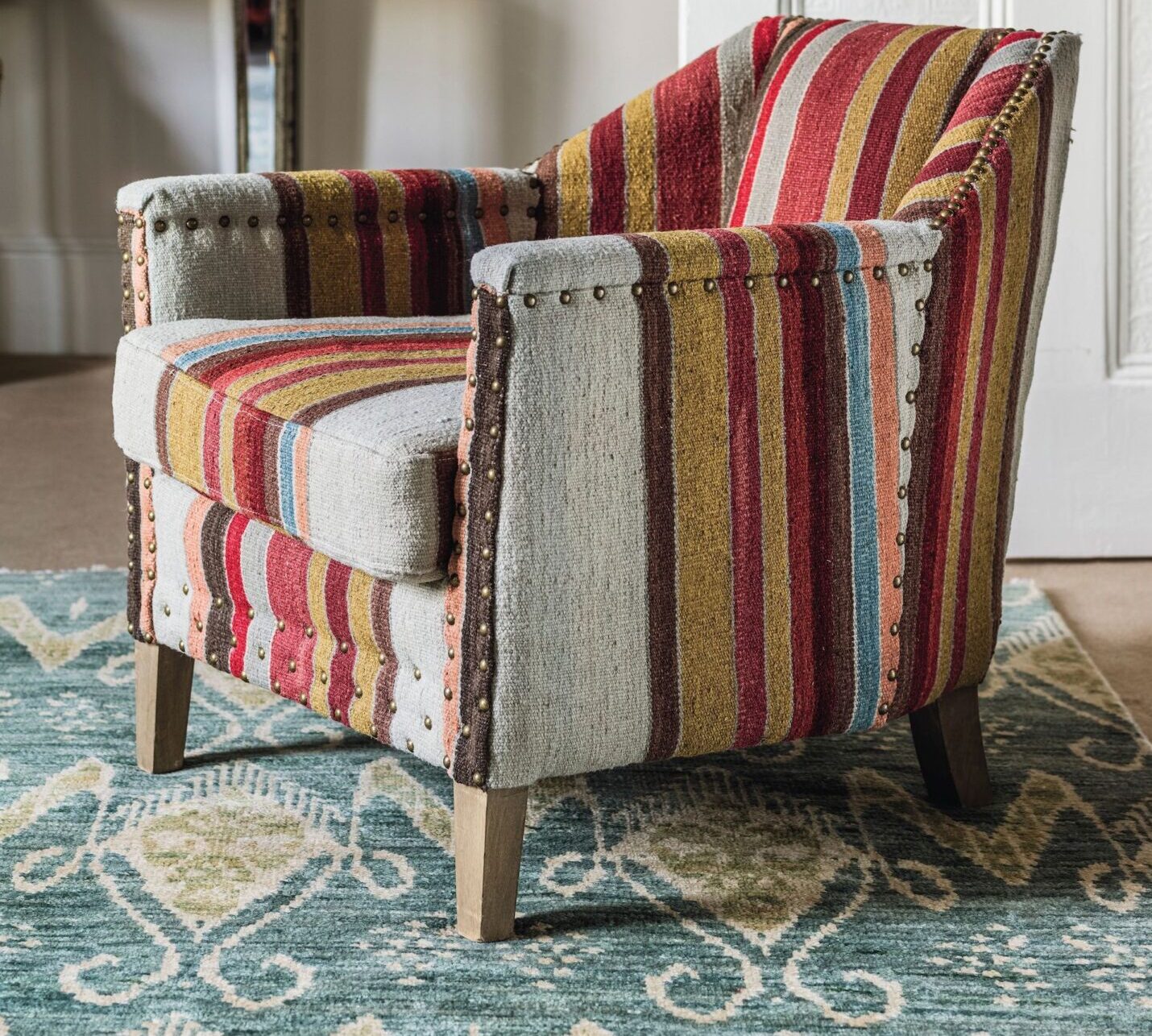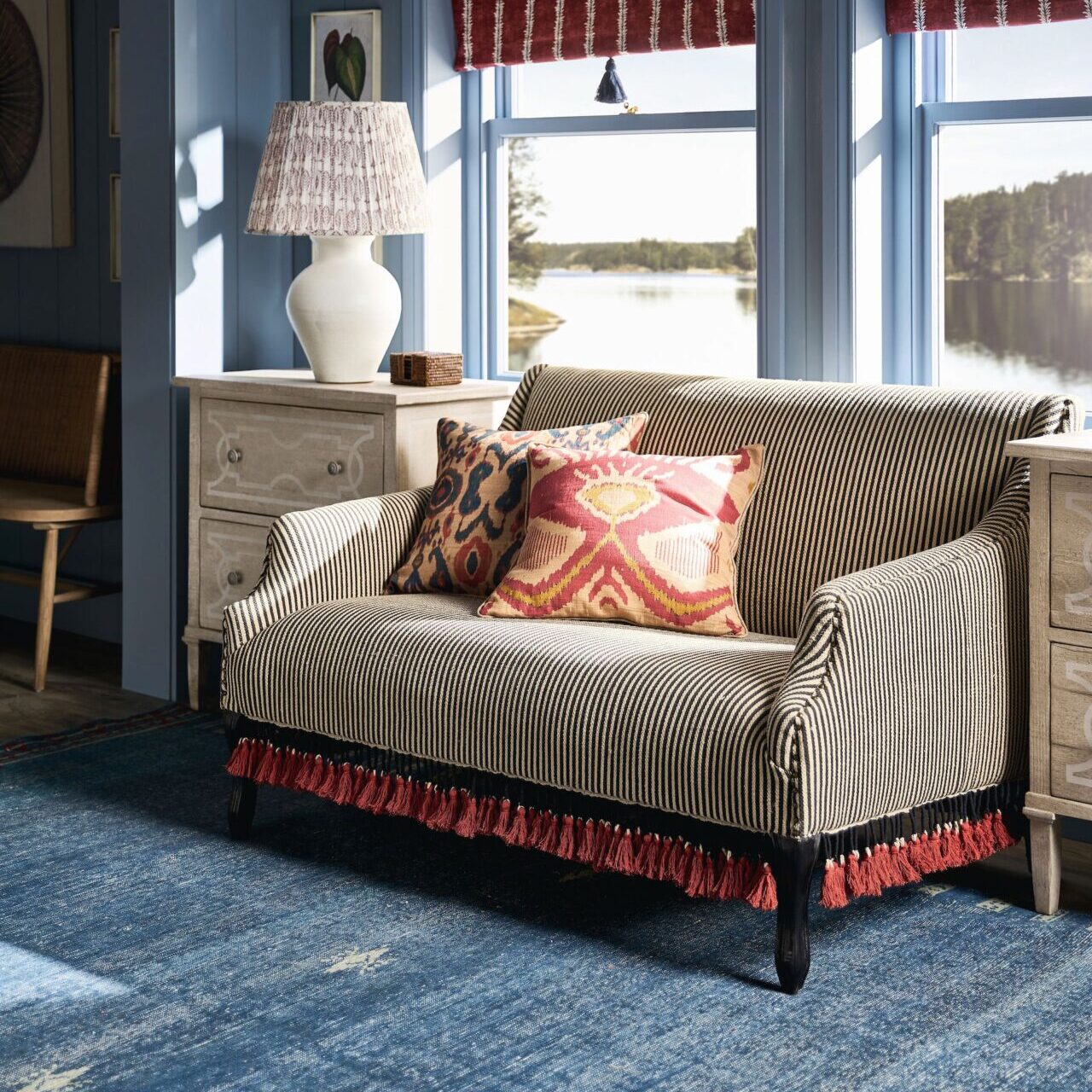
Image Credit: OKA
How to decorate with stripes
Stripes are commonly used in interior design thanks to their versatility and timelessness, and their ability to make a statement. But for those with a more minimalist taste, their boldness can be off-putting.
However, this shouldn’t be the case, as stripes can suit all tastes and have myriad benefits for interior design. Sue Jones, interiors expert and co-founder of British furniture and homeware brand OKA, shares her top reasons why you should be decorating with stripes, how to incorporate the pattern, and how to prevent stripes from dominating your space.
Be bold
Create a striking focal point with a loud, statement piece to bring your room to life. If you prefer to keep your walls on the plainer side, striped furniture is the perfect choice.
Jones says: “Since being introduced, some of OKA’s best-selling striped products have been larger, statement pieces of furniture like armchairs and luxury sofas. Patterned upholstery is not just for the brave. If you’re concerned about going too bold, you can always opt for a more neutral piece with muted colours and stripes that are less defined.”

Brighten up a neutral palette
If you prefer to play it safe with a more neutral colour palette, stripes are perfect for jazzing it up just a little.
“Consider adding smaller statement pieces, such as stools and side tables, or fabrics such as luxury cushion covers, throws and rugs. An even more subtle option is to opt for accessories with stripes, such as a quintessentially British striped china set,” Jones advises.
Make a small space feel bigger
Making the most of small spaces can be challenging. Used in combination with mirrors, stripes can help create the illusion of a larger space.
Jones explains: “If you want a room with low ceilings to feel taller, use vertical stripes, while horizontal ones are best for making a narrow room appear wider. The rule of thumb here is to make sure the stripes are facing in the direction you want to enhance.”

Stripes that won’t date
Stripes may be timeless, but you still need to pay careful consideration to the pattern and colours to make sure they age well.
“If you’re looking to create a classic aesthetic that won’t date, stick to either muted, neutral palettes or traditional bold colours, like reds, greens, whites and blues. These colours have stood the test of time and will remain stylish,” says Jones.
“Avoid introducing stripes with too many colours, which can clash and appear chaotic. Instead, limit yourself to no more than three colours of stripes: a main colour, and two supporting colours; or alternatively a classic two tone, which will never go out of fashion.”
When it comes to the type of stripe, thick stripes are great for a bold look, and work especially well in two tone colours. For a more understated look, thin stripes work equally well with brighter colours or more muted tones.
Don’t let stripes dominate
You need to be selective in where you use stripes, and don’t let the pattern carry over from walls to multiple pieces of furniture. Instead, incorporate patterns on either walls or furniture.
Jones advises: “If you’re introducing a striped armchair or sofa, then you should consider avoiding striped wallpaper so as not to overdo the design. If you’ve opted for striped walls, then you should limit further use of stripes to smaller accessories, such as cushions and other fabrics.
Consistency is also key when selecting stripes.
“Consider sticking to either horizontal or vertical stripes, and avoid combining the two. You should also choose a single colour palette for stripes to avoid creating a jarring aesthetic,” Jones adds.




